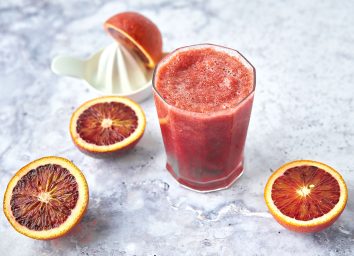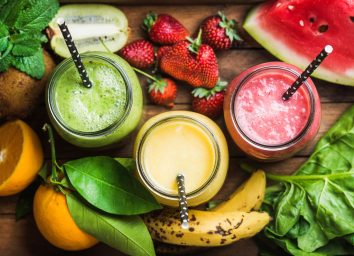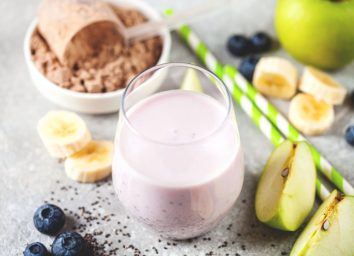7 Ways Your Smoothie Is Ruining Your Waistline
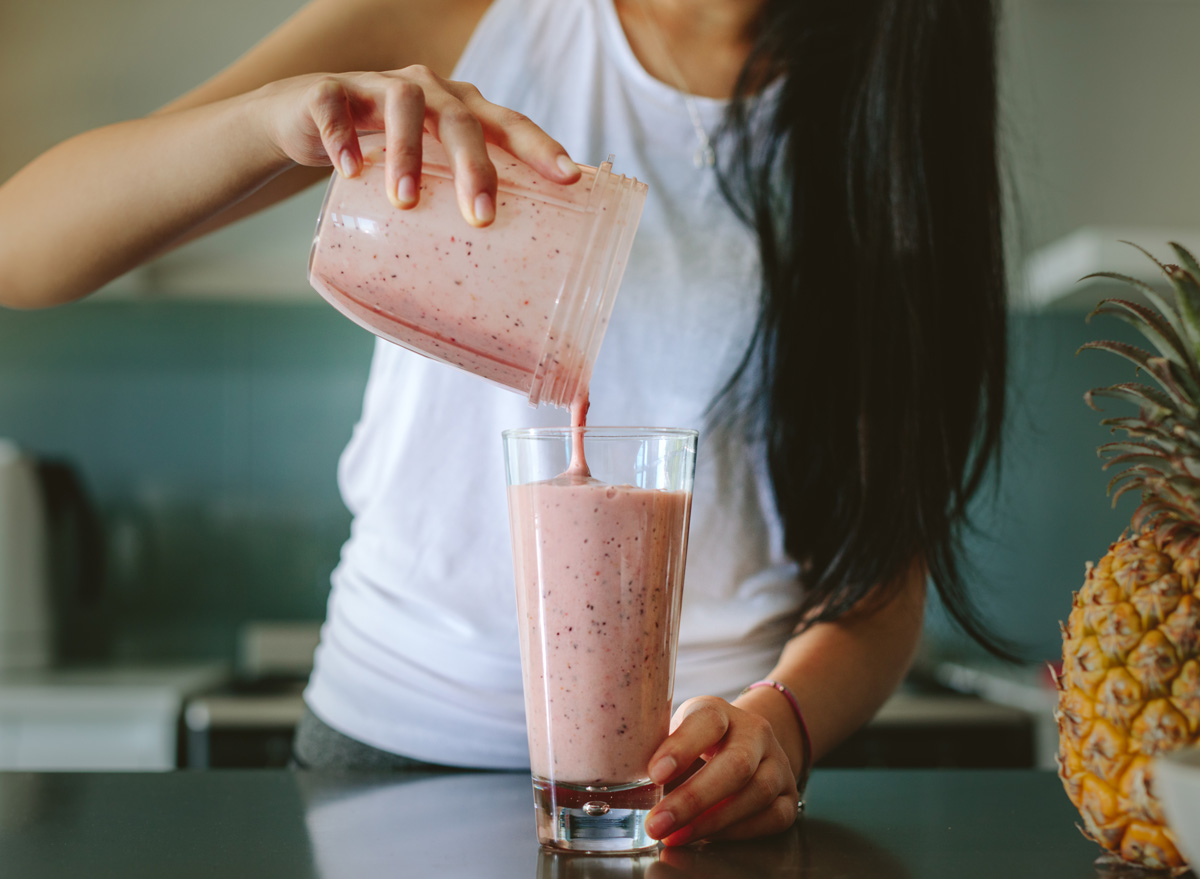
There are very few meals—whether it be breakfast, lunch, or dinner—that are as nutritious, as satisfying, and as well-balanced as a smoothie. Even fewer are as quick and easy to make.
While most of us are well aware that much of What Happens to Your Body When You Drink a Smoothie Every Day is positive, that doesn't mean there are no negative effects. What we don't realize is that if we blindly believe in smoothies' health halo, it can falsely mislead us into thinking that any smoothie we come across is good for us. And that's far from the case.
Smoothies are good for you because they help you get your daily dose of fruits and veggies along with plenty of micronutrients that can do anything from improving your skin to keeping your mind sharp. Of course, that all depends on what you put in them—as well as what you leave out of them. We're here to reveal the disastrous mistakes you're making with your smoothie that essentially render its health benefits useless. These missteps may widen your waistline by increasing your calorie intake or even preventing you from feeling full after a meal.
You're using fruit juice
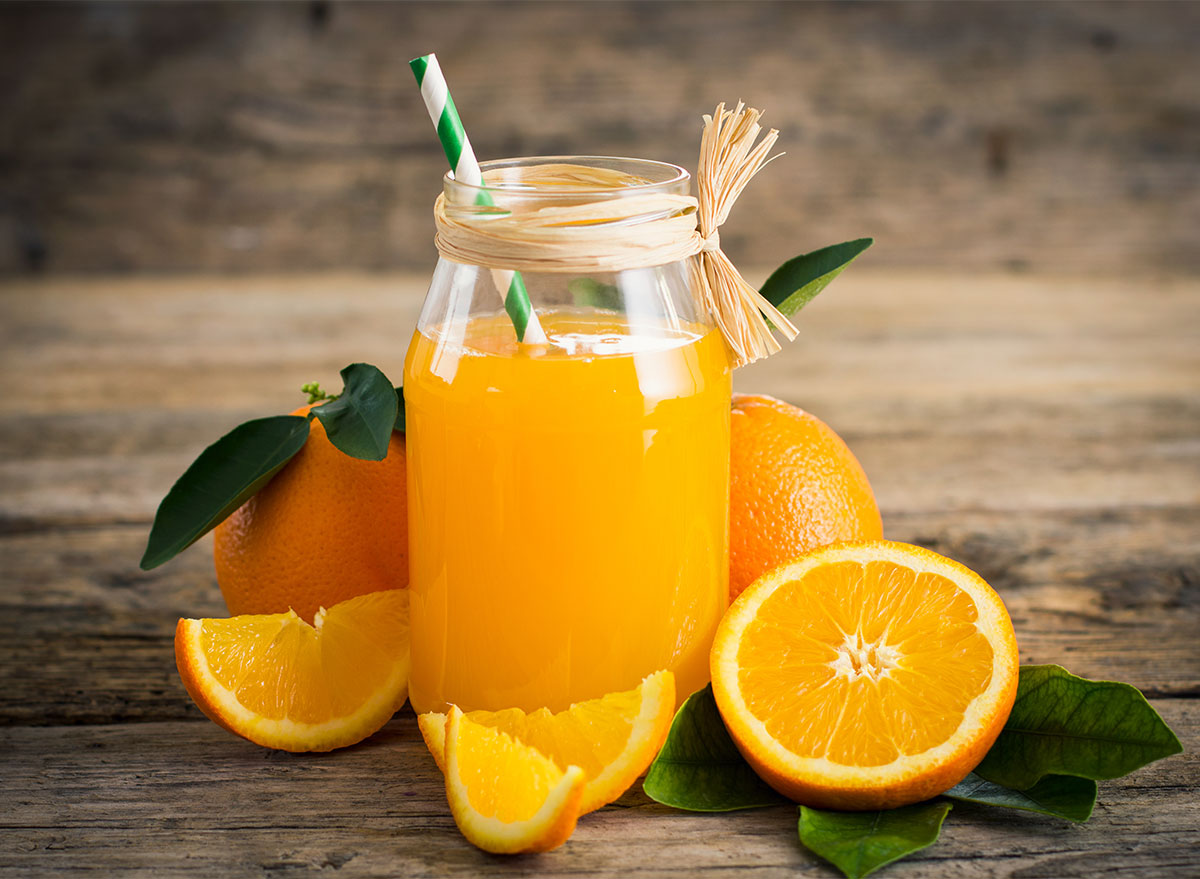
If you're using frozen fresh fruits, trust us—they're going to be sweet enough. Using half a cup of orange juice or apple juice to blend your smoothie will add an additional 50 calories and between 10 and 12 grams of sugar to your already sweet blend. Instead, opt for a milk alternative like unsweetened almond milk. The same half-cup serving size only contains 17 calories—none of which are from waist-widening sugar.
STAY INFORMED: Sign up for our newsletter to get the latest food news delivered straight to your inbox.
You don't add anything but fruit
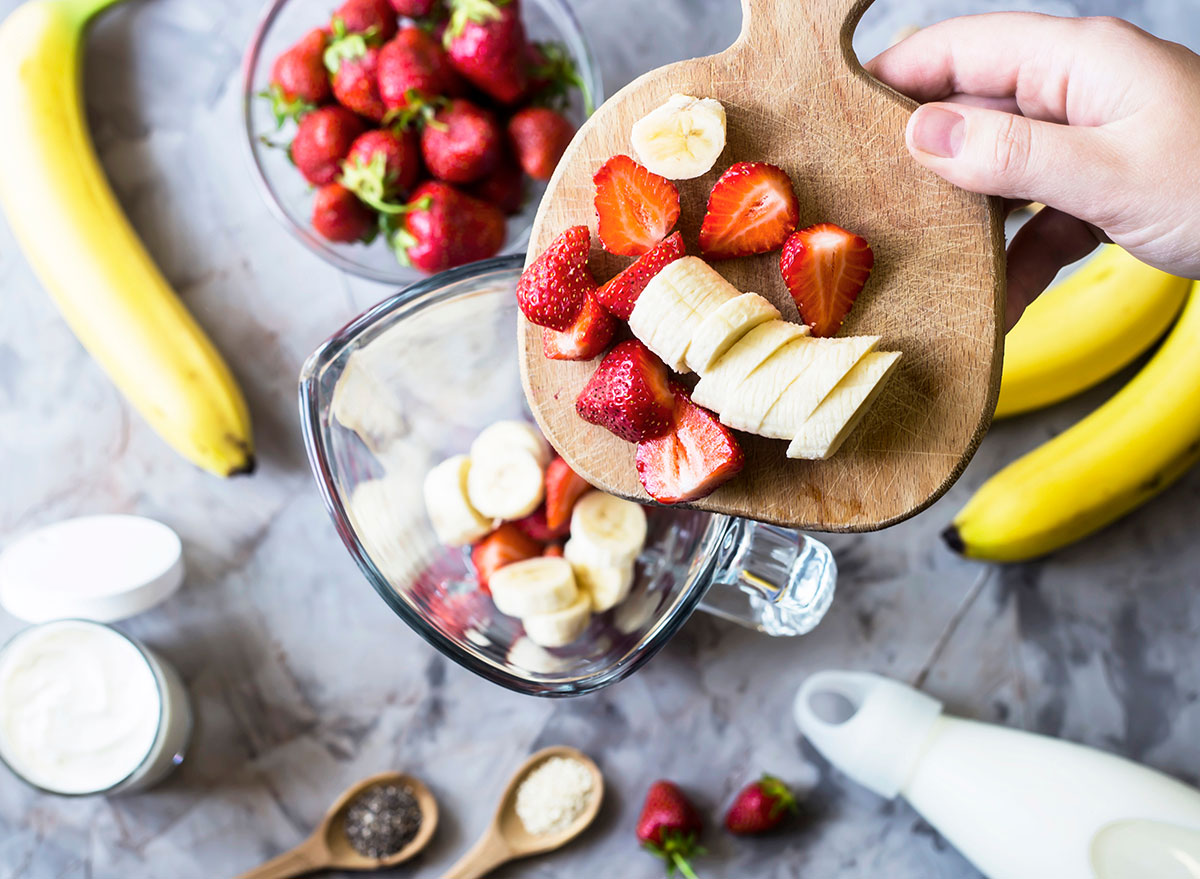
Protein powder? Peanut butter? Flax seeds? Avocado? If these sound like foreign foods when it comes to smoothies, you're doing something wrong. These all have one thing in common: they're a good source of a satiating macronutrient. Whether it's fat, fiber, or protein (or all three), these filling nutrients are essential if you're making a healthy smoothie. Without them, your smoothie is all carbs, which can spike your blood sugar fairly easy without any digestion-slowing nutrients. Overhaul your smoothie routine by investing in one of the 8 Best Protein Powders for Smoothies.
You're drinking huge portions
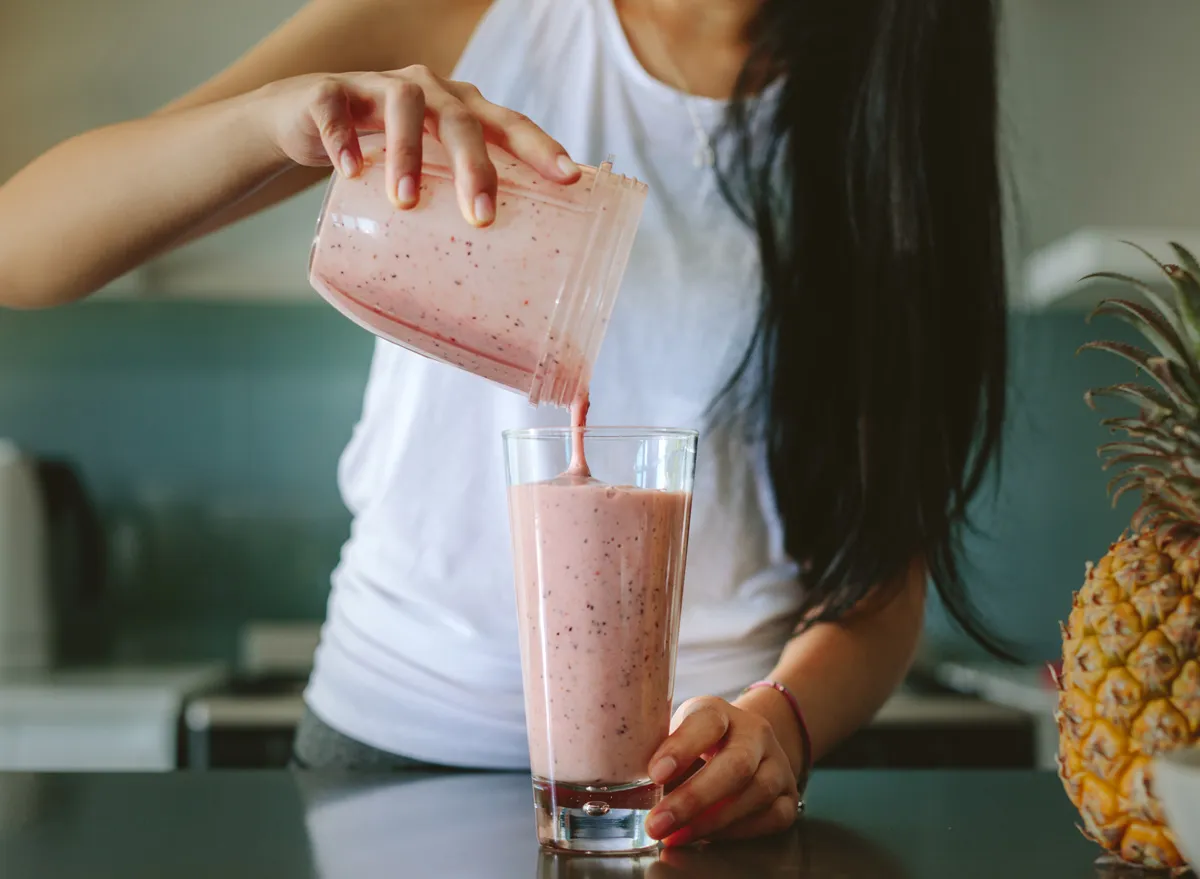
Too much of anything is a bad thing, and that includes smoothies. Aiming for 12 fluid ounces (about a cup and a half) is a good goal. Anything over that means you'll be adding significantly more frozen fruit to your blender, which—you guessed it—means more sugar and carbs. "But what if I just don't finish the whole glass?" You ask. Consider this: A Clinical Nutrition and Metabolic Care review found that consuming carbs in a solid form can help you feel full and curb appetite; however, consuming carbs in a liquid form can leave you feeling hungry and unsatisfied. Because your body registers how full you are based more on the amount of food in your stomach rather than the number of calories you've consumed, you're probably going to finish that larger portion, higher-calorie smoothie without a second thought.
You're ordering them from a restaurant
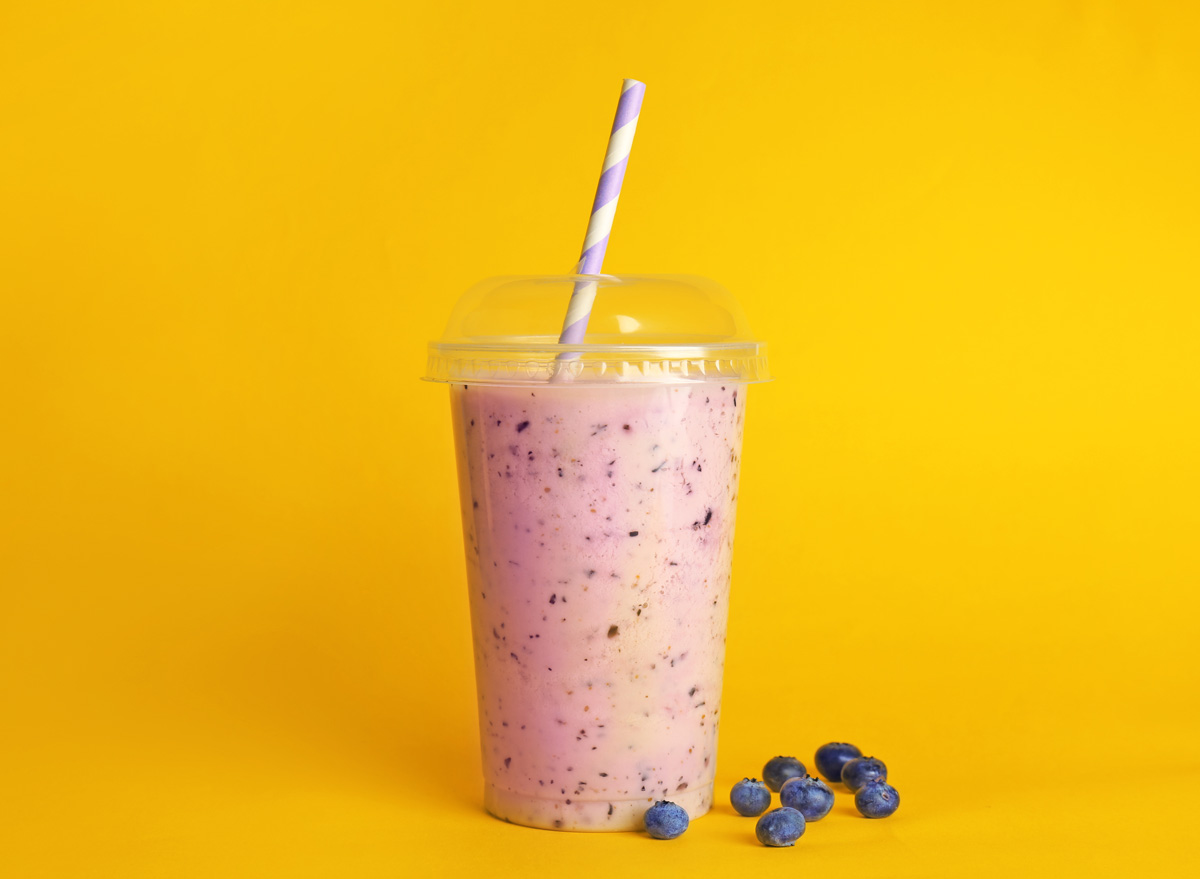
If you take a look at any of the 11 Unhealthiest Restaurant Smoothies in America, you'll understand why. The smoothies on this list average 106 grams of sugar per cup. A large reason for such high sugar counts is that restaurants have no shame in adding sherbet, frozen yogurt, and other added sugars such as honey or fruit juice concentrates. Perhaps worst of all is the fact that you have the option to order "large" smoothies at some of these chains, which contain up to 40 ounces—that's five cups! It's no wonder a smoothie that big could contain nearly 700 calories and 230 grams of sugar. No amount of fiber or protein can prevent a smoothie like that from widening your waistline.
You're buying them by the bottle
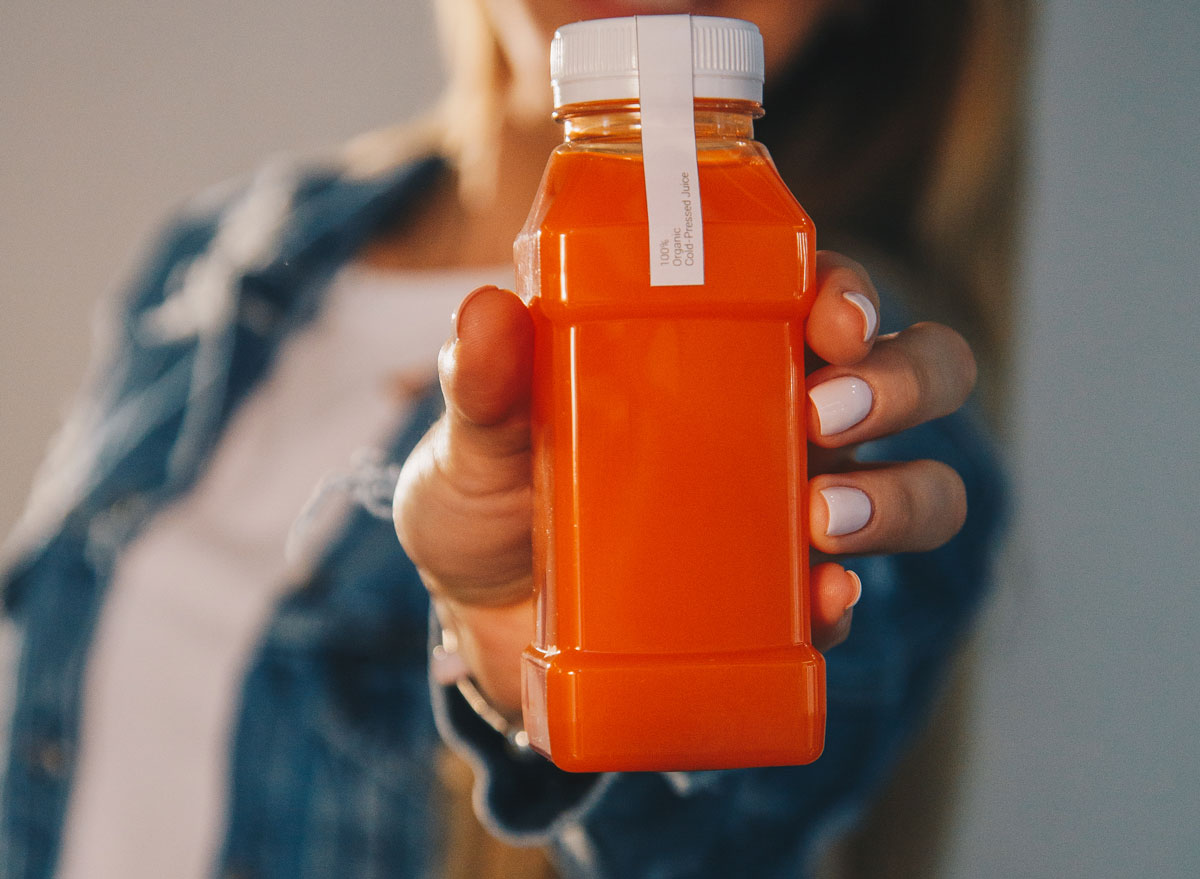
If you're not drinking one of The 7 Best Bottled Smoothies You Can Buy, According to Dietitians, there's a high likelihood your bottled smoothie is widening your waistline. Manufactured smoothies are typically made with fruit juice, have little to no fiber, and are completely lacking in the healthy fats and protein departments.
You add extra sweeteners
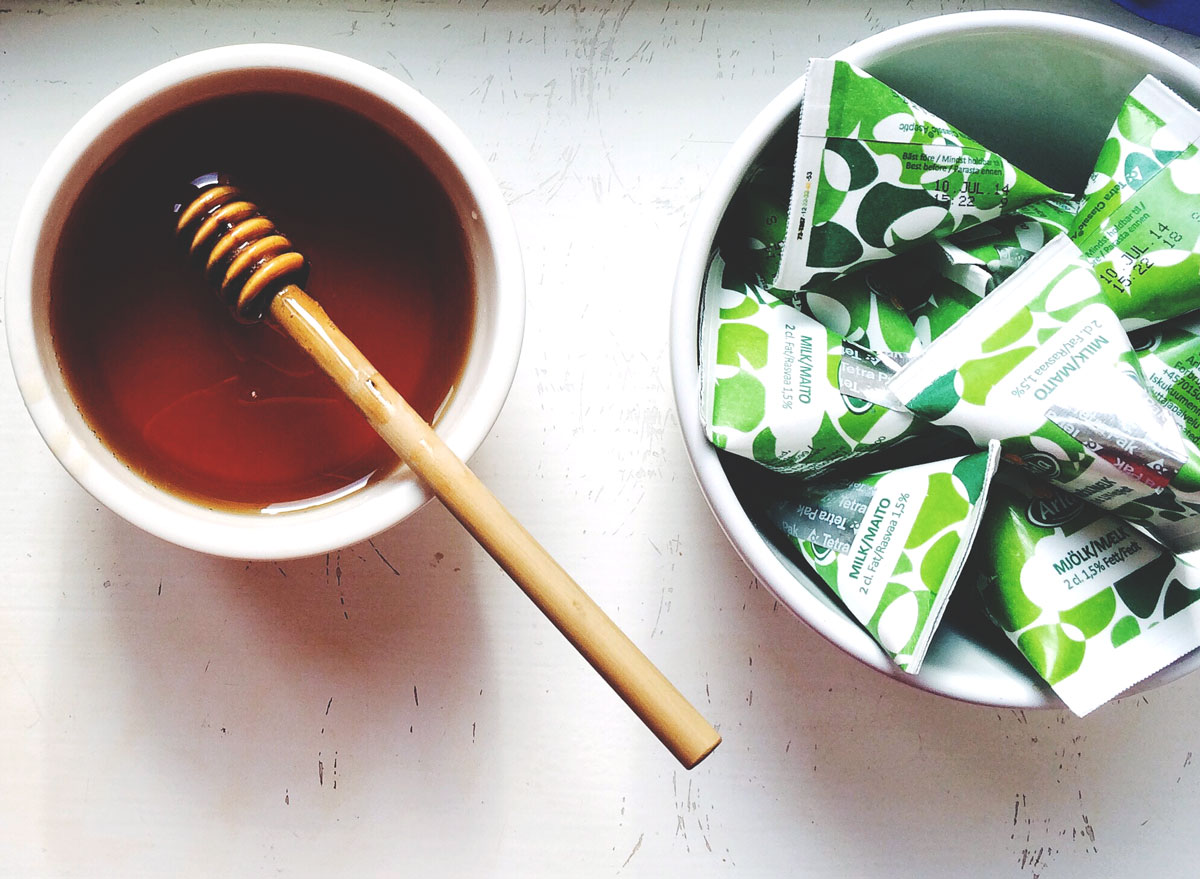
Yes, honey is better than refined cane sugar, but whatever added sugar you're using to sweeten your smoothie is unnecessary. Consider this: it takes just one tablespoon of honey or one date to add 65 calories and 17 grams of sugar to your smoothie. Trust us, it's not worth it. If you want to bring out more flavor from your fruit, consider adding a pinch of salt—it sounds crazy, but it really brings out the sweetness.
You're serving it in a bowl—with extra toppings
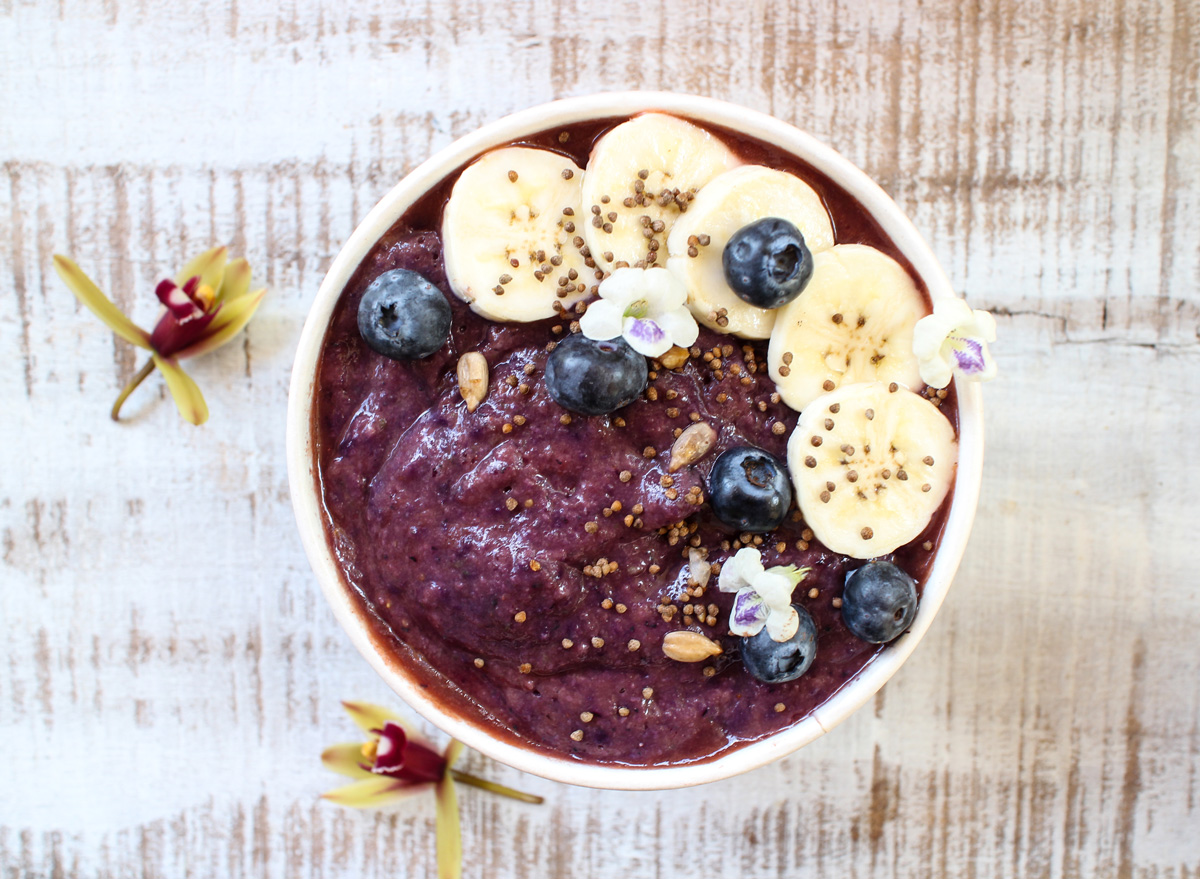
Smoothie bowls are double edged swords—not only are you consuming a smoothie in a larger-than-necessary portion, but you're also adding even more sugar to an already sugary breakfast with extra toppings. It's one thing to add one of The World's 10 Healthiest Granolas, but as these are hard to find, it's more likely that you'll add at least a dozen more grams of sugar (not to mention dozens of carbs) to your smoothie.
